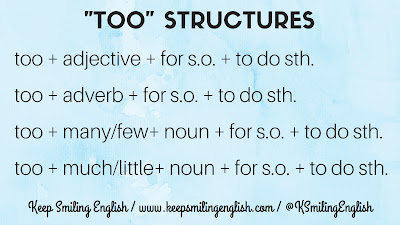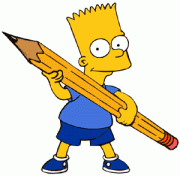Too + ADJ / ADV
I am too
tired The
music is too loud.
He is too
big You
work too slowly.
Too much (Uncountable): There
is too much water.
Too many (Countable): There
are too many students.
ENOUGH: It means sufficient. (SUFICIENTE /
SUFICIENTEMENTE // NAHIKO / ASKI)
Enough +
NOUN I
have enough money.
ADJ / ADV + Enough He is tall enough
to play basketball.
NOT + ADJ + ENOUGH (NO SUFICIENTEMENTE / NO LO BASTANTE // NAHIKO)
He is not tall enough to play basketball.
* We use TO + Infinitive after TOO and ENOUGH
It's too hot to go jogging.
It's cold enough to wear a jacket.
Click the picture below to get some practice on too and enough structures.














